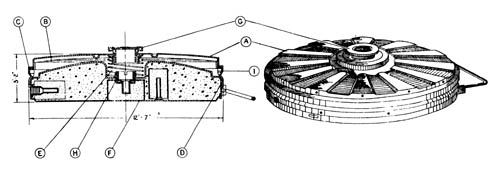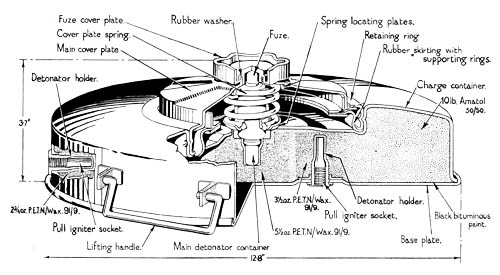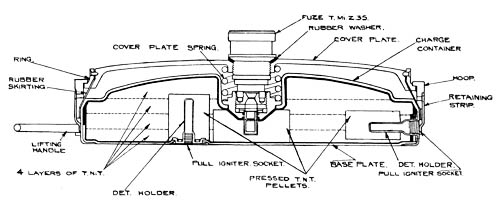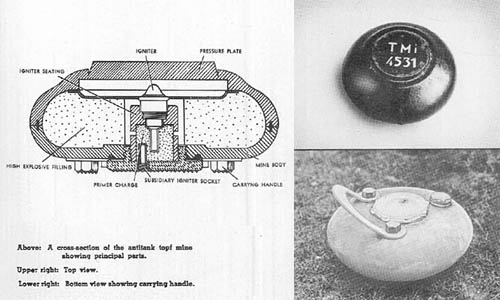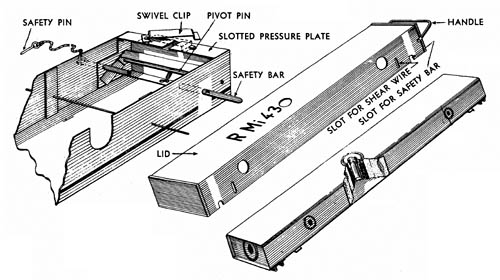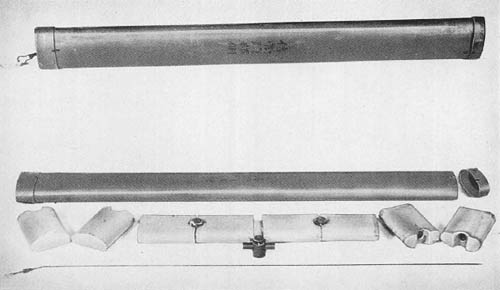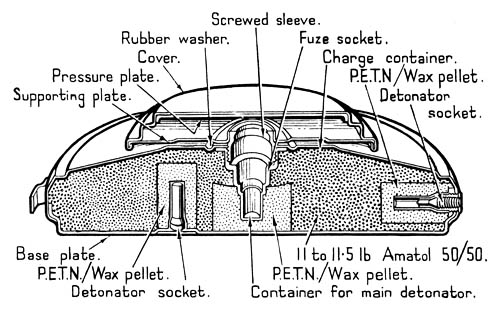
This type of mine is composed of fewer parts, is simpler in construction, and more easily assembled than types 1, 2, and 3. It also appears to be less susceptible to sympathetic detonation than the three other types.
It has the usual Tellermine contour, but no cover is provided, necessitating a rubber seal and a pressure spring. The top of the mine is covered by a “mushroom” head pressure plate which screws into the fuze cavity. This head is made of two thin pieces of pressed steel formed into a hollow shell about 7.5 inches in diameter and about 1 inch thick.
The mine has an aperture in its base and one in its sidewall in which either a pull or tension igniter can be used.
The fuze for the mine is very simple in operation, and consists of a shear pin and a spring-loaded firing-pin. When sufficient pressure is exerted on the mushroom head, the shear pin is broken off and the spring-loaded firing-pin plunges into the fuze primer, setting off the detonator. The detonator ignites the penthrite booster which, in turn, sets off the main charge of amatol.
This fuze, which is also used in types 2 and 3 German Tellermine, is dropped into the fuze cavity rather than screwed in as in the case of the type 1 Tellermine.
SPECIFICATIONS
| Diameter | 11.29 ins. | |
| Weight | 18 lb., 1.5 oz. | |
| Bursting charge | Amatol | |
| Bursting charge weight | 10 lb., 6.94 oz. |
German: p. 304
